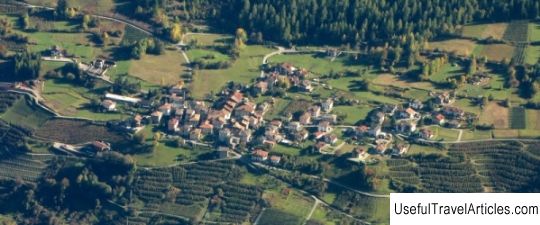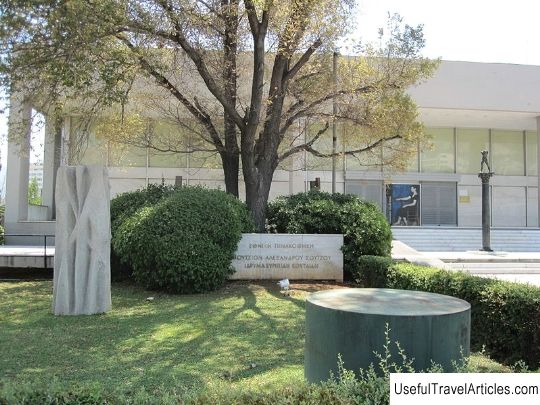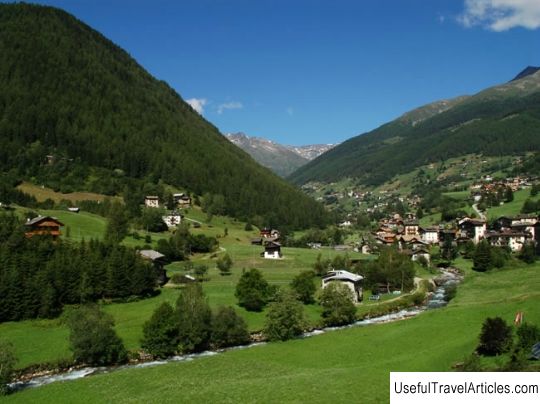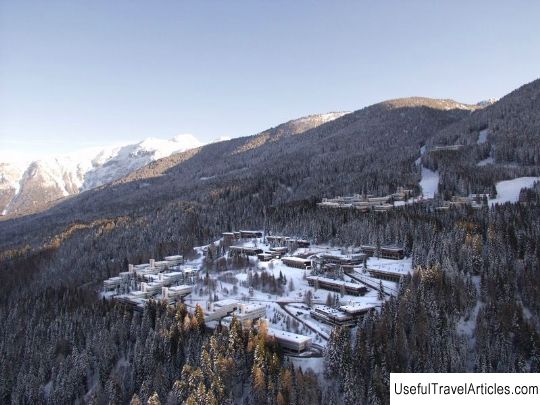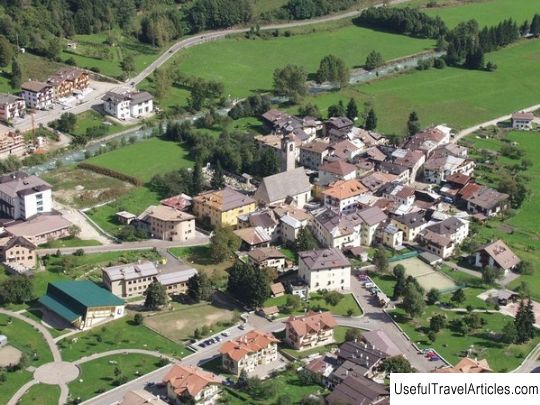Caldes description and photos - Italy: Val di Sole
Rating: 8,6/10 (214 votes) 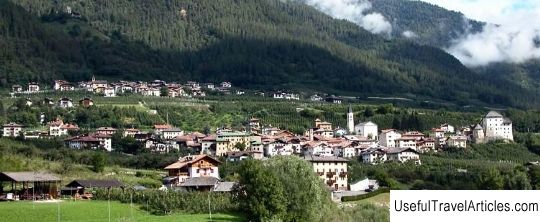
Caldes description and photos - Italy: Val di Sole. Detailed information about the attraction. Description, photographs and a map showing the nearest significant objects. The title in English is Caldes. Photo and descriptionCaldes is one of the largest communes in the Italian resort of Val di Sole, which includes the entire lower part of the valley. It includes seven districts - Caldes, Samoklevo, Cassana, San Giacomo, Tozzaga, Bordiana and Bozzana. The main sources of income for local residents are agriculture and tourism. The latter exists thanks to the presence of a large number of monuments of historical value and importance, such as the Castello Caldes castle and the Rocca di Samoklevo fortress. In Caldes, the tourist infrastructure is well developed, and the Contre complex on the banks of the Noce River with tennis courts, football fields, basketball and volleyball courts, an area for various events, a bar and a park deserves special mention. Probably Caldes got its name from the hot thermal springs that once existed in these places, but have now disappeared. The first written records of Caldis or Caldesio are found in documents from the early 13th century. And two bronze spoons and a silver coin from the 2nd century AD, found here, indicate that the town already existed in the era of Ancient Rome. From 1230 to 1880, Caldes was owned by the Lords Cano Caldesio and Tunn. Here for many centuries lived papal and imperial rulers - Manfroni, Malanotti, Antonietti, Lorengo. In the middle of the 19th century, Caldes became the administrative center of a growing commune, which subsequently "swallowed" the surrounding villages. Certainly, the main attraction of Caldes is the castle, which stands at the eastern entrance to the city. For the most part, it was used as a comfortable residence for representatives of local noble families, but sometimes it served as a military garrison. The oldest part of the castle is a five-story tower from the 13th century. It was built during the reign of the Cano lords and fortified in the 15th century. The castle itself, which is in the shape of a square, was built by the Lords of Tunn in the late 16th century, and was significantly expanded in the first half of the 17th century. Then it was surrounded by walls, in the place of which there are residential buildings today, and equipped with a round tower with a spiral staircase. The rooms of the castle were decorated with friezes, family coats of arms and images of saints. At the end of the 19th century, the building fell into decay, and only in the 1980s, after becoming the property of the government of the Trentino-Alto Adige region, began to regain its former gloss. Today the halls on the ground floor are used for exhibitions and cultural events. Near the castle, you can see the chapel of the Virgin Mary, which has been known since the end of the 16th century. The historic center of Caldes, formed by aristocratic palazzo, residential buildings, bell towers and churches, is considered one of the nicest in Trentino. Tourists are attracted by its cobbled streets, vaulted windows and overhanging roofs that create a cozy atmosphere of the past. Among the religious buildings are the 19th century parish church, the castle chapel and the churchyard of San Rocco. Frescoes from the 15th century have been preserved in the medieval bell tower with a double row of vaulted windows. And in the church of San Rocco, built after the plague epidemic in 1510, you can admire the beautiful wooden altars and altarpieces from the 17th century.       We also recommend reading Eggenburg description and photos - Austria: Lower Austria Topic: Caldes description and photos - Italy: Val di Sole. |
